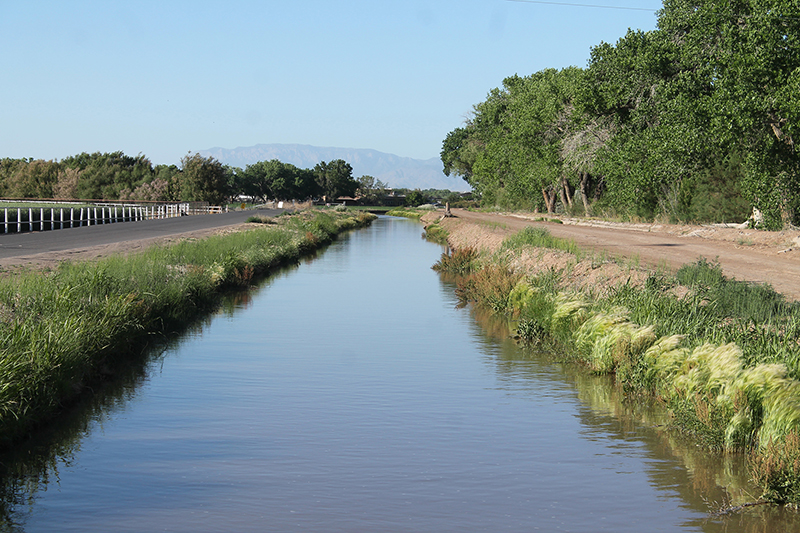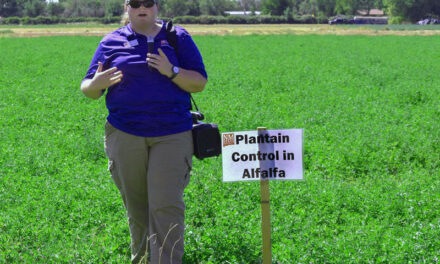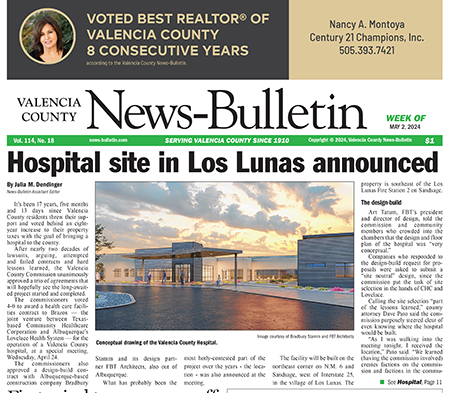From News-Bulletin reports
With the natural flow of the Rio Grande at a minimum, irrigation in the Middle Rio Grande Conservancy District is drawing to an end this season — earlier than anticipated.
Irrigation ditches usually run until October, providing farmers in the district a full-growing season.
In response to higher-than-normal irrigation demand and lower-than-expected natural river flow, MRGCD began releasing water from the San Juan Chama Project on July 17. This release from upstream storage was needed earlier and at higher rates than anticipated.
When the SJCP waters were in the river, it accounted for about 40 percent of the irrigation water supply with the rest from natural river flow.
On Monday, Aug. 28, the district announced the SJCP water is now depleted, predicting for the second time in 40 years, the Rio Grande will likely run dry in Albuquerque.
In 2022, the river dried in Albuquerque, limiting irrigation by June. Farmers managed to eke out a growing season last year thanks to rainfall and a small delivery of San Juan Chama water — about 67 percent of the anticipated allocation of 20,900 acre-feet.
The district did receive its full allocation of SJCP water this year. The water comes to the state through a pipeline project that pulls water from a different basin in Colorado.
In addition to extreme drought conditions over the past four years, other factors impacting upstream storage and the Rio Grande flow include rehabilitation work on El Vado Dam and New Mexico’s Rio Grande Compact debit.
In recent years, the district hasn’t been able to store irrigation water behind El Vado Dam on the northern end of the irrigation system for two reasons — one is a “debt” to the state of Texas of about 100,000 acre-feet of water required by the state’s Rio Grande Compact.
On a more practical front, El Vado Dam, which is owned by the federal government, is undergoing extensive rehabilitation and is physically unable to hold water. As the project progresses, it’s anticipated the district will have partial storage capacity — providing compact debts have been satisfied — by 2024, with the rehab projected to be completed by 2026.
Now that all the San Juan Chama water has been released, the district will be relying solely on natural river flow to continue making irrigation deliveries for non-pueblo lands through the fall.
The remaining water will be first delivered to the six pueblo’s prior and paramount lands, the district announced in a press release earlier this week, promising the district will do its best to “equitably deliver any water in excess of the prior and paramount irrigation demand to non-pueblo lands downstream of the Pueblo of Isleta,” according to the release.
If rain increases available water supply in the river, MRGCD will resume delivery to non-tribal lands north of the Pueblo of Isleta.
“Unfortunately, our hydrological reality is tough: we have natural factors like high temperatures and lack of rain, as well as infrastructure and Rio Grande Compact restraints that limit our ability to store and distribute water for times like these,” said Jason Casuga, MRGCD chief executive officer.
There are some sections of the Middle Rio Grande Valley that do run dry most years, however last year was the first time the river reach ran dry in Albuquerque since the 1980s. Middle Rio Grande water users have been given prior notice to anticipate extreme water shortage and irrigation delivery limitations.
“Our hope is that there is always enough water to provide to our users when they need it, but the reality is that there are challenges, and we will all have to work together to adapt and come up with solutions that keep the Middle Rio Grande Valley green,” said Casuga.
“Ongoing coordination with partner agencies to secure alternate water storage, as well as efforts to increase conveyance efficiency are among our top priorities as this irrigation season winds down.”
Water managers and fish biologists at the district and the Bureau of Reclamation have been preparing for the possibility of the river drying in the Albuquerque area and will work to mitigate the effects on endangered silvery minnow in the area.
“Reclamation and our partners continue to coordinate closely to manage every drop of water for multiple purposes. In the last two decades, Reclamation has leased just under 500,000 acre-feet of water to supplement flows through the Middle Rio Grande for endangered and threatened species, which, at times, also increased inflow to Elephant Butte Reservoir,” said Jennifer Faler, Reclamation’s Albuquerque area manager.
“We remain committed to supporting agricultural and municipal uses while meeting Endangered Species Act requirements to support the Middle Rio Grande ecosystem. We continue to lease available water, but through this multi-decadal drought, our options are becoming increasingly more limited.”
The Valencia County News-Bulletin is a locally owned and operated community newspaper, dedicated to serving Valencia County since 1910 through the highest journalistic and professional business standards. The VCNB is published weekly on Thursdays, including holidays both in print and online.



















